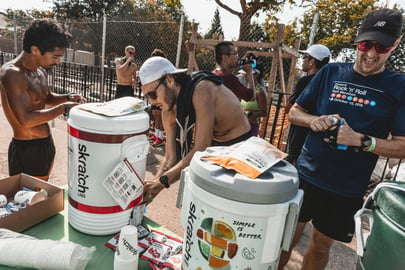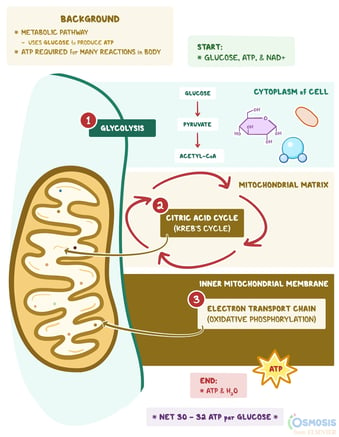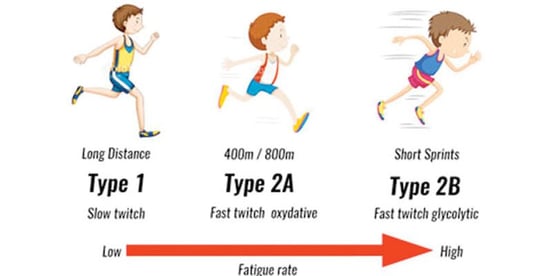Inside My Body When I Run Ep. 4: Metabolism & Muscle
October 18, 2022
Experienced runners at this point are pretty familiar with marathon training programs -- their 16weeks-ish and 4-5 times per week-ish design. While public awareness of those training programs and the necessity for a smart plan has increased greatly, we seem to have a significant lag and delay in awareness of metabolism, muscle demand, and fueling for these training plans. Especially, there is a lag in awareness of sabotaging effects of lack of fueling design for a race.

How do you decide how much you need to eat, drink, or replenish? It's a bit complicated for sure...what to eat before, during, after...protein? carbs? pasta? While there is no perfect answer because it is individualized in demand, when it comes to nutrient vs. demands there are some common pitfalls, as well as some better approaches we can increase our awareness to.
This blog is for you if you've ever gone through an entire training plan, arrived at race day feeling strong, and bonked out of the race 60-75% through because you just hit a brick wall. You may suspect that you haven't focused on strength training enough, or that you didn't run far enough in your long run, but in all likelihood (and as studied in research), your nutritional planning or metabolic preparation failed you rather than your drive, dedication, or strength.
WHAT DOES METABOLISM EVEN MEAN? IS MINE SLOW? FAST?
Metabolism is generally known as the human body's ability to utilize available energy, whether endogenous (inside your body - ATP) or exogenous (outside your body - Food). At MOTIVNY we can help you assess your BMR (Basal Metabolic Rate) using a fasted breathing test. You can compare yourself to the norms to see where you fall, but more importantly, compare that to the energy demands of your day and training programs. See the below chart for an idea of what's "typical." Keep in mind, if you have a more physical lifestyle and work setting, your rate may be naturally higher.
Table VI. Weight (kg), Total Daily Energy Expenditure (TDEE; kcal/Day), Basal Metabolic Rate (BMR; kcal/Day), and Physical Activity Level (PAL) of Selected Human Groups
| Group | Sex | Weight (kg) | TDEE (kcal/day) | BMR (kcal/day) | PAL (TDEE/BMR) |
|---|---|---|---|---|---|
| Industrialized populations | |||||
| 18–29 years | M | 75.6 | 3298 | 1793 | 1.84 |
| F | 69.2 | 2486 | 1480 | 1.68 | |
| 30–39 years | M | 86.1 | 3418 | 1960 | 1.74 |
| F | 67.9 | 2390 | 1434 | 1.67 | |
| 40–64 years | M | 77.0 | 2749 | 1673 | 1.64 |
| F | 70.0 | 2342 | 1386 | 1.69 | |
| 65–74 years | M | 76.4 | 2629 | 1650 | 1.59 |
| F | 60.2 | 2055 | 1267 | 1.62 | |
| 75 and older | M | 72.6 | 2199 | 1434 | 1.53 |
| F | 48.3 | 1458 | 980 | 1.48 | |
| Average | M | 77.5 | 2859 | 1702 | 1.67 |
| F | 63.1 | 2146 | 1309 | 1.63 |
Source: William R. Leonard, in Encyclopedia of Energy, 2004
WAIT, SO BREATHING = ENERGY?
Well...sort of. In Episode 2 we discussed that your body needs to use oxygen to fuel muscles and the demand increases with intensity (METs). While the breathing aspect is essential, cellular respiration (metabolism) is also essential. Oxygen and CO2 are tools in the cycle of energy within a cell. Your body utilizes these O2 and CO2 molecules to aid in the process of turning nutrients (i.e. glucose or fatty acids) into ATP (ENERGY!). If you're more of an enthusiast on science, you can read a more in-depth breakdown of how this process works via The Citric Acid cycle and more about metabolism here.
 Source: https://www.osmosis.org/answers/cellular-respiration
Source: https://www.osmosis.org/answers/cellular-respiration
For the rest of the crew, you won't need to understand this chart, but it should illustrate that your body needs to use oxygen and offload CO2 in the process of creating energy (ATP) that muscles can use. The primary portion of this process occurs within the Mitochondria, which are sort of like a mini-brain within every cell that tells a cell what it should be prepared to do.
When we exercise, we send signals to the cell that are read by the mitochondria. One large portion of why we train is to get the cells to build up more mitochondria. When we have more mitochondria, we can create more ATP and are able to create more muscle output (i.e. run faster for longer). Refer back to Ep. 2 to remind yourself that as you want increasing intensity, you'll need to inhale more oxygen to keep this cycle growing!
SO ATP IS ENERGY, BUT WHAT ABOUT MUSCLES?
Hopefully, the dots are connecting between breathing, metabolism, energy, and muscles and their respective roles in how/why you train the way you train. But what about muscles exactly? ATP is used as energy within muscle cells to create muscular contractions. Without going into detail on how this works, the ATP allows the shortening and lengthening of segments of muscle cells; the building blocks of the movements we want to create. In addition, when we train, our body's muscle cells will get more adapted to the demands we've placed on them.
 Source: https://www.teachpe.com/anatomy-physiology/muscle-fibre-types
Source: https://www.teachpe.com/anatomy-physiology/muscle-fibre-types
One important illustration of this is muscle fiber types. You can think of this in a simple way as Type 1 muscle being more for endurance exercise, and type 2 muscle being more for fast-paced activity and shorter durations. Everyone has a blend of these fiber types in their muscle, and as you train you will likely trend more towards an increase in Type 1 muscle in order to do your endurance activity more efficiently.
Elite endurance athletes average 70-80% Type 1 muscle fibers, while sprinters have 25-35% Type 1 fibers. (source)
Another topic of confusion regarding muscles is muscle hypertrophy, or growth attained often by strength training. A lot of endurance athletes or runners tend to be apprehensive to initiate strength training programs because they fear "getting too big." Luckily, recent science has found that with a ratio of endurance training to strength training of 3:1 the body is unlikely to have hypertrophy via protein synthesis occur. (read more) If anything, increases in protein synthesis that are signaled for when we strength train help to offset the potential loss of lean muscle mass when we undergo long-duration endurance activities (i.e. marathon training).
It turns out you can actually do a great amount of prevention of muscle loss just by engaging in resistance training 1-2 times per week, even if it doesn't have great structure.
MAKING SURE THE MUSCLES HAVE THE FUEL THEY NEED
Fueling is another essential for endurance training because once you get past your 45-60mins of activity, it's pretty unlikely that your body still has glucose or fatty acid available to do that whole fancy metabolism process. When that happens, your body can hit desperation and start to shunt blood flow from the muscles and resulting in failing out of your runs. Our Coach JP Lemire wrote a basic hydration guide that you can find here, so we'll focus on nutrients in this fueling discussion. Check his parameters to make sure you're downing the right liquids.
*If you're looking for specific advice in terms of food plans and meals, it's best to reach out to a Dietician or Nutritional Doctor who can help you exact your plan based on an assessment of your needs, but when it comes to how the body uses up its resources there are some basics to follow.*
Some simple hallmarks of a successful fueling plan:
- Appropriate meals BEFORE racing/training to prepare blood glucose and muscle glycogen storage
- Re-fueling begins at ~45 minutes into the event and replenishes carbs, calories, and electrolytes every 30-45 minutes
- Solid foods are kept to easily digestible items that don't require heavy processing by the gut (your stomach won't have access to as much blood flow because you're running)
- Athlete has practiced the fueling plan prior to the event ensuring familiarity with the food sources and how the individual's body will respond to those items
- AFTER event replenishment of protein and appropriate calorie replacement that was spent. You'll burn ~120-150 calories per mile of training depending on body composition and pace
It's possible to get a more exact measurement for your individual needs by testing. Using PNOE metabolic testing, we are able to test your metabolic rate at any given intensity. For example: Run 3 miles at your marathon pace and see what energy was utilized. This gives the athlete a more certain amount to strive for in terms of replacement. The necessity for this strategy increases as the duration increases; so if you're targeting marathons, half-Ironman, Ironman, Ultra-marathons, etc...you NEED a nutritional plan specific to your own demands.

PUTTING THOSE PIECES TOGETHER
Episodes 1-4 of this blog series has been focused on acclimating the athlete to the less-known processes within the body that happen behind the scenes of your training plan. This should help you to understand that all of the following need to be in place to maximize training effectiveness:
- PLANNING - Program intention and training frequency are aligned with athletic goals
- BASELINE - Strategy is appropriate to the current level of capability
- EATING - The body is prepared with nutrients to utilize for muscle output
- LUNG CAPACITY - Breathing capacity and pattern are appropriate to the energy output of the session's intensity
- ENERGY EXPENDITURE - Fueling meets the needs of the individual's body composition
- SKILL WORK - Mind-body connection allows the athlete to coordinate the motion demands of the task
- RESISTANCE TRAINING - Muscular strength and endurance are durable for the training session
- RECOVERY - Post-session maintenance to keep intact typical range of motion and output
- CONSISTENCY - Frequent inputs that allow the body to adapt
For more on muscle and metabolism in endurance athletics, I'd highly recommend this research article for more in-depth information and a deeper dive into other important topics: Link
COMING UP NEXT: EP. 5 PROGRAMMING AND ACTION PLANNING
- Some stock approaches for how often to train
- How to tailor programming to your needs
- Responding to how you feel when you train and after you train
- Setting realistic expectations and reducing injury risk with smart decision-making
 Happy running.
Happy running.

LUKE GREENBERG
Manual Medicine, Kettlebells and Golf Training, Team Dad